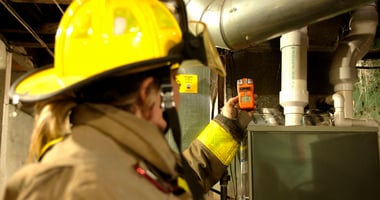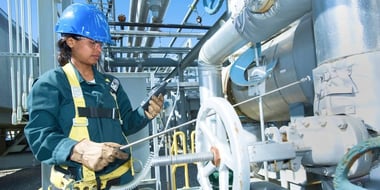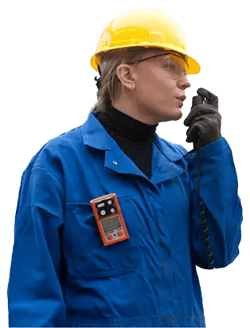Key Takeaways
-
Remote alerts improved situational awareness: Gas readings were instantly shared with key personnel, enabling faster, coordinated responses.
-
Reliable battery life streamlined event prep: Monitors stayed powered for days, allowing setup ahead of time and reducing day-of workload.
-
Automated maintenance saved time and effort: Docking stations handled calibration and updates, keeping devices ready without manual checks.
 It’s 6 a.m. The city is waking up, and so is the fire chief. Today’s event will draw thousands downtown, and it's crucial for the local fire department to keep everyone safe from gas hazards. But because of issues with their area monitors, it was difficult to trust they were getting accurate readings at the right time.
It’s 6 a.m. The city is waking up, and so is the fire chief. Today’s event will draw thousands downtown, and it's crucial for the local fire department to keep everyone safe from gas hazards. But because of issues with their area monitors, it was difficult to trust they were getting accurate readings at the right time.
Outdated Equipment and Operational Bottlenecks
The department’s area monitors were designed for remote monitoring, but in practice, they rarely stayed connected. During events, a first responder had to sit at a computer for hours, manually watching gas readings and relaying them over the radio. This not only tied up valuable personnel, but it also slowed down response times when it went into alarm.
Their monitors also needed frequent charging and recalibration, causing responders to maintain the equipment more than desired. Without clear data, diagnosing issues or preparing devices for the next deployment was time-consuming and inefficient.
Making the Switch to Industrial Scientific
After using Industrial Scientific’s personal gas monitors for over 20 years, the fire department decided to upgrade to Radius® BZ1 Area Monitors with iNet® and DSXi Docking Stations.
“We switched to Industrial Scientific for all of our gas monitoring because we know the monitors work,” said the fire chief.
Here’s what they learned from the switch:
Real-Time Alerts = Faster, Smarter Responses
With iNet, gas readings are sent instantly via text or email to the fire chief, hazmat responders, and the mobile command center.
Longer Battery Life Reduces Setup Time and Frees Up Personnel
Radius BZ1 monitors run for up to seven days. The department now sets up monitors the day before an event and retrieves them afterward.
Automated Maintenance Keeps Devices Ready to Go
With DSXi Docking Stations, monitors are automatically bump tested, calibrated, and updated between uses.
Want to see how this transformation unfolded? Read the full case study to learn how this fire department worked to protect its city more efficiently and effectively.



